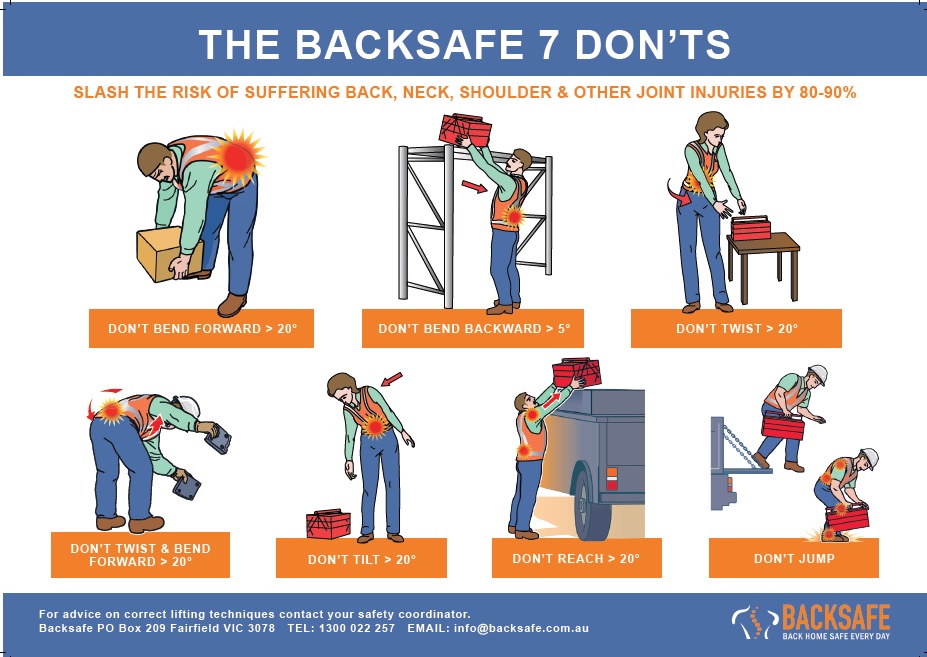What is manual handling?
- Manual: of or done with the hands, powered by the hands – from the old French manuel, from Latin manualis = hand.
- Handling: manipulation; management; treatment.
These definitions help give a full understanding of manual handling as “the manipulation, management or treatment of something, using the hands.”
The official definition developed by Australian State and Territory Occupational Health & Safety Authorities states that manual handling is “any activity requiring the use of force exerted by a person to lift, lower, push, pull, carry or otherwise move, hold or restrain any animate or inanimate object.”
Manual tasks cover a wide range of activities including doing the shopping, mowing the lawn, stacking shelves or working on a production conveyor line. Some manual tasks if addressed incorrectly are hazardous and can cause musculoskeletal disorders.
What is a hazardous manual task?
A hazardous manual task, as defined in the WHS Regulations, means a task that requires a person to lift, lower, push, pull, carry or otherwise move, hold or restrain any person, animal or thing involving:
- Repetitive or sustained movements,
- Postures or forces involving long duration.
- High or sudden force.
- Hand-arm or whole-body vibration.
Not all manual handling is hazardous. For example, a working person can have a hard day at work, go home tired but then wake up the next morning fitter and stronger than the morning before. This occurs when the worker has used correct manual handling techniques, is in a safe work environment and where workloads are managed by well-informed safety professionals. The objective of this worker is to become an “athlete in industry.” This is in direct contrast to other workers who carry out their daily tasks with no thought of manual handling safety and end up getting injured and costing industry billions of dollars in direct and indirect costs each year.
What is a musculoskeletal disorder (MSD)?
A musculoskeletal disorder, as defined in the Work Health and Safety (WHS) Regulations, means an injury to, or a disease of, the musculoskeletal system, whether occurring suddenly or over time.
MSDs may include conditions such as:
- Sprains and strains of muscles, ligaments and tendons
- Back injuries including damage to the muscles, tendons, ligaments, spinal discs, nerves, joints and bones
- Joint and bone injuries or degeneration – this could include injuries to the shoulder, elbow, wrist, hip, knee, ankle, hands and feet
- Nerve injuries or compression
- Muscular and vascular disorders as a result of hand-arm vibration
- Soft tissue hernias
- Chronic pain MSDs occur in two ways:
- Gradual wear and tear to joints, ligaments, muscles and intervertebral discs caused by repeated or continuous use of the same body parts
- Sudden damage caused by strenuous activity, or unexpected movements such as when loads being handled move or change position suddenly
Injuries can also occur due to a combination of these mechanisms, for example, body tissue that has been weakened by cumulative damage may be vulnerable to sudden injury by lower forces.
The Backsafe Team are experts in manual handling training and can help you train your staff or set up your workplace to eliminate MSD injuries. Contact us today to discuss your training needs 1300 022 257.
The Backsafe motto is “work out at work and not wear out at work to become an athlete in industry”




